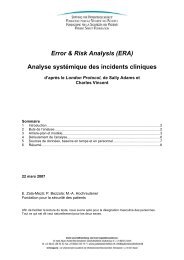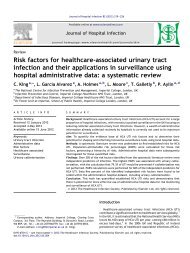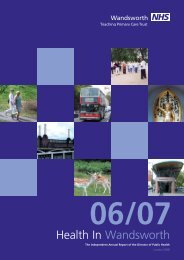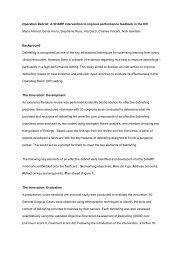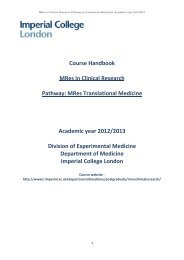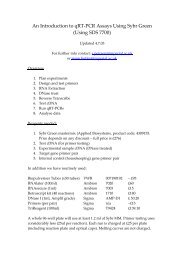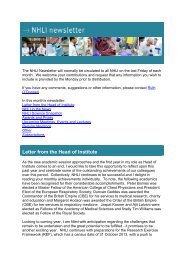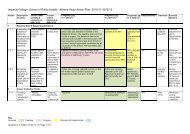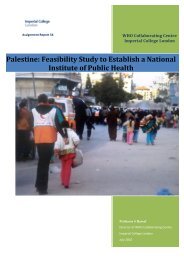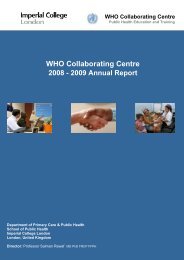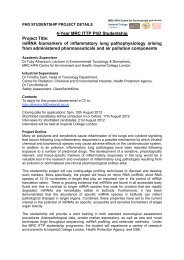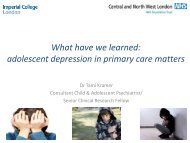QOF Plus Year 1 - Imperial College London
QOF Plus Year 1 - Imperial College London
QOF Plus Year 1 - Imperial College London
You also want an ePaper? Increase the reach of your titles
YUMPU automatically turns print PDFs into web optimized ePapers that Google loves.
Rosen et al. (2001) categorised initiatives to improve access to healthcare in terms of absoluteand relative strategies. The aim of absolute strategies is to increase the overall availability ofservices. Relative strategies aim to reduce inequalities and improve fairness. The relativestrategies adopted through the proposed indicators specifically target groups including ethnicminority groups and people with learning or physical disabilities) for whom services are known tobe inadequate, inappropriate or difficult to make use of.The recently published results for the 2007/8 Picker Institute Patient Survey identified twoparticular areas where performance in Hammersmith and Fulham is poor compared to theaverage performance of the 69 Picker Institute Trusts participating in the Patient Survey. Theseareas are ‘Making an Appointment’ and ‘Seeing a Doctor’. The proposed indicators have beendesigned to support practices in focussing on these areas.Priority and relevance to national policyThe concepts of patient experience and patient-centredness in healthcare have becomeincreasing prominent over the last decade and this has been increasingly reflected in nationalDepartment of Health national policy and national guidance. Correspondingly, the measurementof aspects of patient experience, including patient experience of access, has featured in the KeyPerformance Indicators of the Healthcare Commission and there are indicators relating to patientexperience in the national Quality and Outcomes Framework.Local contextA high proportion of children speak English as an additional language in Hammersmith andFulham – 45% at primary school (ranging from 6% to 67% between schools) and 39% atsecondary school (ranging from 7% to 56% between schools). 158 languages are spoken bychildren who attend local schools. After English, the main languages are Somali and Arabic(Zeuner, 2008).A relatively high percentage of residents in Hammersmith and Fulham (22%) are from non-whiteethnic groups. The largest non-white ethnic groups are Black Caribbean and Black African (both4.4%) (Zeuner, 2008).There are a total of 10,850 residents on disability registers in Hammersmith and Fulham. Ofthese, 350 are registered as deaf or hard of hearing and 470 are registered with a learningdisability. In terms of health deprivation and disability, around 17% of the population live withinthe most deprived fifth of areas nationally (Zeuner, 2008).Seven percent of people (11,600 people) in Hammersmith and Fulham provide unpaid care. Ofthese, almost 2,000 people provide care for at least 50 hours per week. The profile of carers inHammersmith and Fulham is similar to that in England. Adults in their fifties are most likely to beproviding care, with more than 20% doing so. A greater proportion of women than men arecarers providing care to a partner or relative (Zeuner, 2008).79



